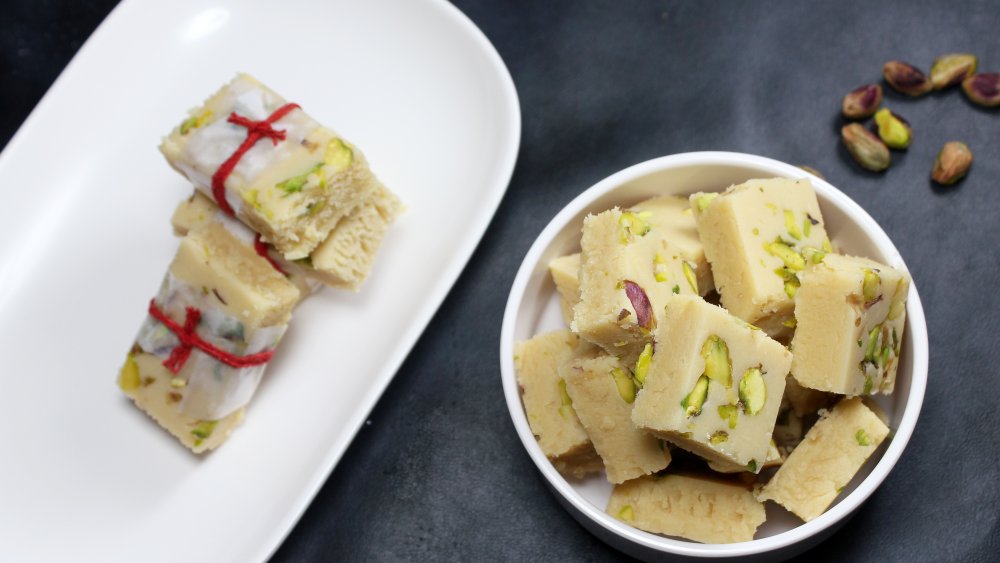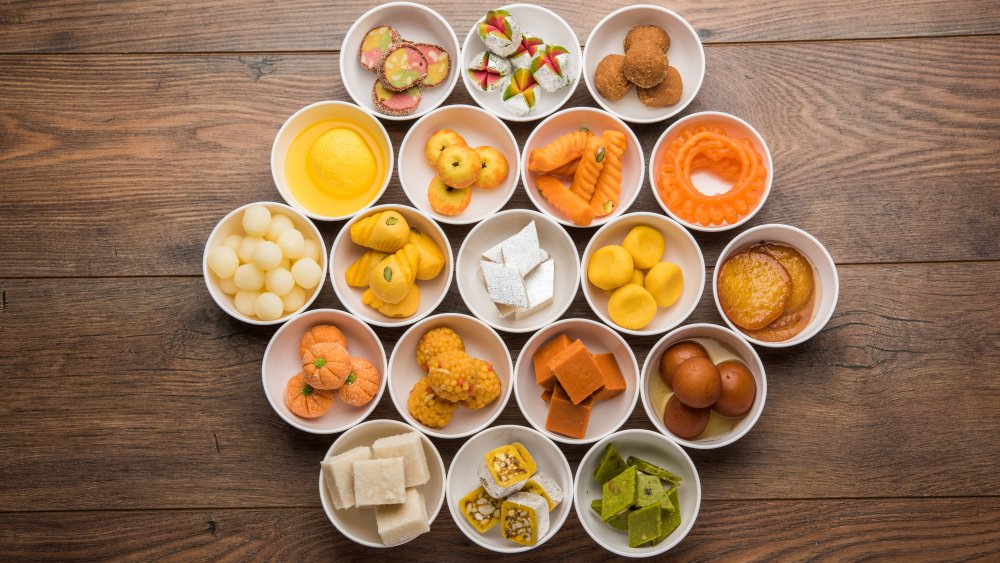What Is Burfi And What Does It Taste Like?
Burfi, also known as barfi, is a sweet treat especially common in Northern India, but worth tasting anywhere in the world (via Taste Atlas). This dessert is similar to fudge in texture, but made with milk rather than not chocolate that's found in traditional American recipes. The name makes more sense when you realize that in Persian and Urdu, burfi denotes snow and ice which refer to the milk solids in the recipe and the resulting white color. Burfi is part of a group of desserts called mithai. Mithais are groups of sweets made specially for Indian holidays (via Food NDTV). This tradition is said to derive from traditions of preparing favorite food for the gods, including a known love by Lord Krishna's love for Doodh ki Barfi.
While burfi is traditionally white from the milk base, many people choose to embellish this item with additional treats. It's quite common to see the addition of pistachios, cashews, or peanuts (much like fudge with walnuts). Regional variations may include fruits, saffron, rose water, gram flour, or almonds. Different cooks will prepare the treats in squares, diamonds, or circles. Barfi may be served at weddings and topped with beaten and edible silver leaf called vark, but is most commonly found at the festival of Diwali.
Diwali is a festival of lights and levity
Diwali is the festival of light named for rows (avali) of clay lamps (deepa) that are set outside of homes to symbolize an inner light protecting from spiritual darkness (via National Geographic Kids). In significance, Diwali is equivalent of Christmas in the United States. Important not only to Hindu culture, this time is celebrated by Jainism as marking the nirvana of Lord Mahavira, in Sikhism, it honors the day that Guru Hargobind Ji, the Sixth Sikh Guru, was freed from imprisonment. For Buddhists and other religions, too, this is generally a time of celebration and joy.
Diwali is celebrated over a five=day period with each day marked by a specific action or observance. Day one involves cleaning the home and gathering items of gold for good fortune. Day two involves decorating from colored sand to the namesake lamps. Day three is the biggest festival day, with feasts and fun. This year that celebration will occur on Nov. 14 (via Indian Times). Days four and five wind things down a bit more with visits to friends and loved ones.
If you feel like creating your own Diwali celebration this year, you can try making your own holiday barfi with some simple recipes from NDTV, or for more advanced and adventurous cooks just check out this Ombre Coconut Burfi Cake from Food and Wine Magazine.

